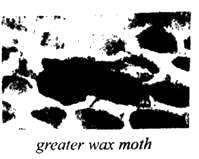growing mountain of electronic waste like computers and personal digital assistants. The electronic waste stream is
increasing three times faster than traditional garbage as a whole.
Electronic devices contain valuable metals such as gold and silver. A Swiss study reported that while the
weight of electronic goods represented by precious metals was relatively small in comparison to total waste, the
concentration (含量) of gold and other precious metals was higher in So-called e-waste than in naturally
occurring minerals.
Electronic wastes also contain many poisonous metals. Even when the machines are recycled and the harmful
metals removed, the recycling process often is carried out in poor countries, in practically uncontrolled ways which
allow many poisonous substances to escape into the environment.
Creating products out of raw materials creates much more waste material, up to 100 times more, than the
material contained in the finished products. Consider again the cell-phone, and imagine the mines that produced
those metals, the factories needed to make the box and packaging(包装) it came in. Many wastes produced in the
producing process are harmful as well.
The U.S. Environmental Protection Agency notes that most waste is dangerous in that “the production,
distribution, and use of products — as well as management of the resulting waste — all result in greenhouse gas
release.” Individuals can reduce their contribution by creating less waste at the start — for instance, buying
reusable products and recycling.
In many countries the concept of extended producer responsibility is being considered or has been put in place
as an incentive (动机) for reducing waste. If producers are required to take back packaging they use to sell their
products, would they reduce the packaging in the first place?
Governments' incentive to require producers to take responsibility for the packaging they produce is usually
based on money. Why, they ask, should cities or towns be responsible for paying to deal with the bubble wrap (气
泡垫) that encased your television?
From the governments' point of view, a primary goal of laws requiring extended producer responsibility is to
transfer both the costs and the physical responsibility of waste management from the government and tax-payers
back to the producers.
